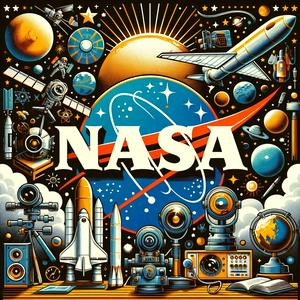NASA Space Update: SPHEREx Operational, Workforce Reductions, X-59 Milestone
# NASA SPACE UPDATE PODCAST - APRIL 30, 2025Welcome to this week's NASA Space Update! I'm your host, bringing you the latest from America's space agency.The big headline this week: NASA's SPHEREx observatory is officially operational after its March launch. This groundbreaking mission is already performing exactly as expected as it begins its mission to scan the entire sky, study galaxy formation, search for the building blocks of life, and peer back to the universe's earliest moments.In other mission news, NASA's PUNCH satellites, which hitched a ride with SPHEREx, are now helping scientists understand how the Sun's outer atmosphere becomes solar wind. Meanwhile, the EZIE mission, launched in March, has taken its first measurements to study auroral electrojets - intense electric currents flowing above Earth's poles.But it's not all smooth sailing for the space agency. NASA is preparing for significant workforce reductions amid budget pressures. The agency has already conducted a round of layoffs, closing its Office of the Chief Scientist and Office of Technology Policy and Strategy, impacting about 20 employees.Acting Administrator Janet Petro described these as "difficult adjustments" but viewed them as "an opportunity to reshape our workforce." The Trump administration is proposing substantial funding cuts, with the Science Mission Directorate potentially facing a 50% reduction in fiscal 2026.Senator Chris Van Hollen has vowed to "fight tooth and nail" against these cuts, calling the proposal "not just shortsighted, it's dangerous."On a brighter note, NASA recently announced that astronaut Chris Williams will make his first spaceflight in November 2025, and the X-59 quiet supersonic aircraft successfully completed engine testing as it moves toward its first flight.For students and educators, NASA's Glenn Research Center is launching the High School Engineering Institute this summer - a free program helping high school students prepare for careers in aerospace.Looking ahead, NASA astronaut Don Pettit and two Roscosmos cosmonauts are scheduled to return to Earth from the International Space Station on Saturday. And NASA's Human Exploration Rover Challenge takes place this weekend in Huntsville, Alabama.Want to learn more? Visit nasa.gov for the latest updates on missions, research, and opportunities to engage with America's space program. This is NASA Space Update - thanks for listening!

